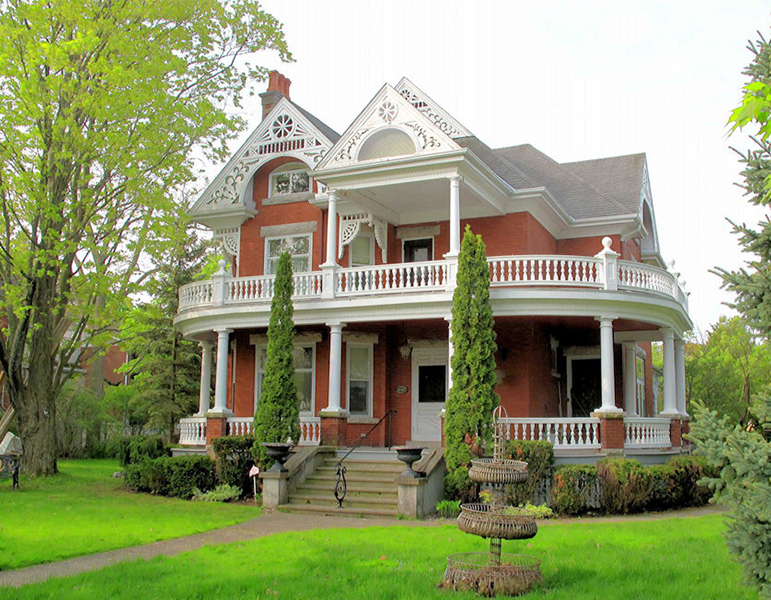For eight decades, two Bruce County women tirelessly sent daily weather reports to the national weather service.
The pioneer weather observers were Catherine Isabella McNabb (1840-1917), starting in 1872, followed by her protége and neighbour, Agnes Tolmie (1861-1951).
They sent thrice-daily weather observations to Toronto by Morse code over a telegraph line strung from their homes on Alice Street to the telegraph office in downtown Southampton.
Nor were Catherine and Agnes unusual in holding decidedly non-traditional jobs. Enterprising Bruce County women have long struck out on their own, opening stores, managing hotels, working in factories.
The first stop was often teaching, like Jane Nairn, first schoolteacher in Kincardine (1851), or Edna (Palmer) Aiken, born in 1906, organist at Allenford United Church, and piano teacher to many local children. Also in Allenford, Annie (Heddle) Aiken ran a dressmaking shop around 1917 and trained a number of young apprentices.
After teaching, nursing beckoned. Mary F. Stinson, born in Huron Township in 1876, graduated in the first nursing class at McKellar’s General Hospital at Fort William. During the deadly flu epidemic of 1918-19, she went “from house to house in Ripley and cared for everyone without remuneration.”
When doctors were rare in isolated areas, local women acted as midwives. In Pike Bay, Catherine Robbins was one of the earliest known midwives, remembered for the pipe she carried. Of course, we should not forget Southampton’s very first midwife, Angelique Longe (1844-1934), known universally as “Aunt Annie”.
Women took positions in libraries or with the telephone company. Mae MacArthur served as Underwood telephone switchboard operator from 1947 until the 1960s.
At Brinkman’s Corners, Esma Rouse opened the Dew Drop Inn in 1939 while her husband was away guiding. The business she began lasted more than 30 years. Esma also began writing a column for the Wiarton Echo in 1944.
With the advent of the Second World War, women moved into war work. Malcolm Furniture in Kincardine had over 300 employees, many of them women, building components for the all-wood Mosquito bomber.
And with the men away at war, the women took over. For example, Albert and Alice Wright operated their grocery store at Broadway and Princes streets in Kincardine from 1930 to 1949. But when Albert joined the Home Guard during WWII, Alice ran the store, helped by her daughter, May. Mrs. Wright also owned her own hat shop.
If you consider astute husband hunting one of the traits of the enterprising woman, then Southampton resident Minnie Davis ranks high.
Minnie’s folks came from Devon, England. Her dad, Thomas Davis (1827-1897), was a cabinet maker and photographer in the late 1870s in Southampton (his cabinet shop on High Street burned in the Great Fire of 1886).
Minnie Davis (1864-1949) married three times. No. 1 was John W. Morgan, a railway conductor from Palmerston, in 1893. A year later, John died.
John’s two life insurance policies named his mother as beneficiary, but she had died in 1890. His sisters tried to claim the payouts, so Minnie sued the two life insurance companies, won and pocketed $1,200. In 1902, Minnie built the fine house at 126 High St., Southampton.
In 1909, she married James Belton Jacques, son of Southampton Methodist Minister George Jacques. James was described as a merchant in San Francisco when he married Minnie. Two years later, he likewise joined the dear departed, in Los Angeles.
In 1917, the widow Davis sold the house on High Street (valued at $2,200) and chose for No. 3the Southampton millionaire businessman Alfred Frederick Bowman (1865-1945), who lived right across from Minnie’s place, in the mansion at 125 High St. The 1930 U.S. federal census shows Mr. and Mrs. Bowman living in Los Angeles.
Though Minnie had connections on the west coast, she did come home in the end. She is buried in Southampton cemetery, with her son Orville Morgan. A.F. Bowman too lies nearby, with his first wife, Charlotte Catherine Sparling, and two infant children.



